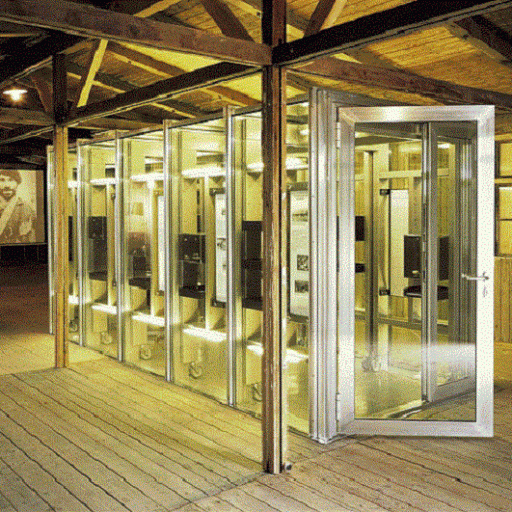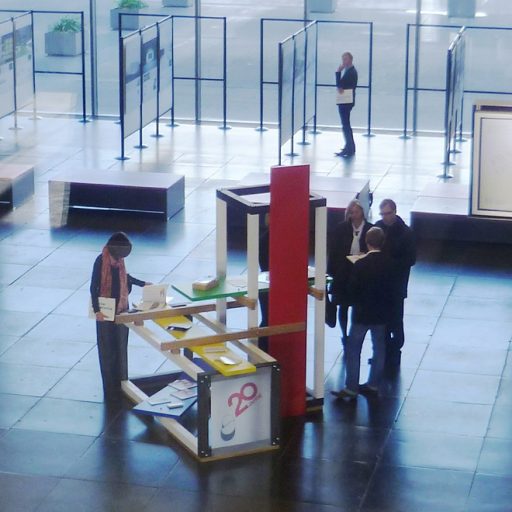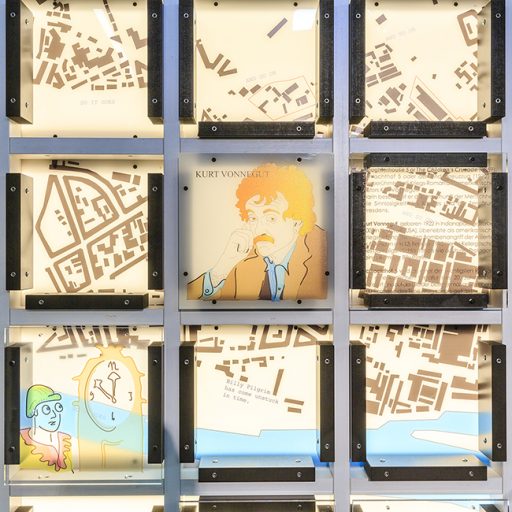Interactive Rooms (1995) was conceived during a sleepless night contemplating the simplicity of the message “architecture matters”.
I literally woke up in the middle of the night and wrote the draft.
Moveable boxes one square meter in size with dancers moving in and out of the spaces, which could be stacked and changed to create a multitude of scenes.
UNIVERSAL ideas and archaic themes such as; How much space does a human require? or how the interplay of the individual with the built environment affects our interaction with each other, Inside and outside, day and night, light and darkness, safety and risk, communication and non-communication, loneliness and togetherness, frustration and fear, were all part of the „architecture dance“ performed with the boxes by dancers.
It was performed in Dresden at the Projekttheater and as the dancers moved through their daily lives in their boxes, from waking up in the morning light, through breakfast and morning sport, work and home office, eating, playing loving and sleeping, visitors moved freely through the architecture City/ Landscape and interacted with the dancers.
The boxes were examples of a simple architecture, low budget, affordable architecture.
It was my first „microarchitecture“ project, indeed a forerunner of the micromuseum projects.
The simple question „How much space does a human require?“ continued to play a central role in several of my later projects such as the micromuseum for erich kästner (famous German writer) or the development of the Betonzeitschiene micromuseum (Concrete time lines) for the industrial concrete slab housing (Plattenbauten) both in Dresden, or the Ehrenhain Zeithain WW II memorial in Zeithain, Germany.
Today the refugee crisis and the corona pandemic reminds us of the actuality and timelessness of the question.
The pictures taken of the performances show the plexi-glass separating us physically from each other but allowing visual or distanced voyeuristic contact.
How will this impact our architecture in the long term? I think a certain development is the re-discovery of the importance of public space as the new living rooms of society.
Perhaps we will need more micro-architectural implantations in our public spaces and buildings to create not just safe social distancing zones but social knitting spaces for living, working and playing in.
I am presently working on the making of a sequel to ”Interactive rooms”…







